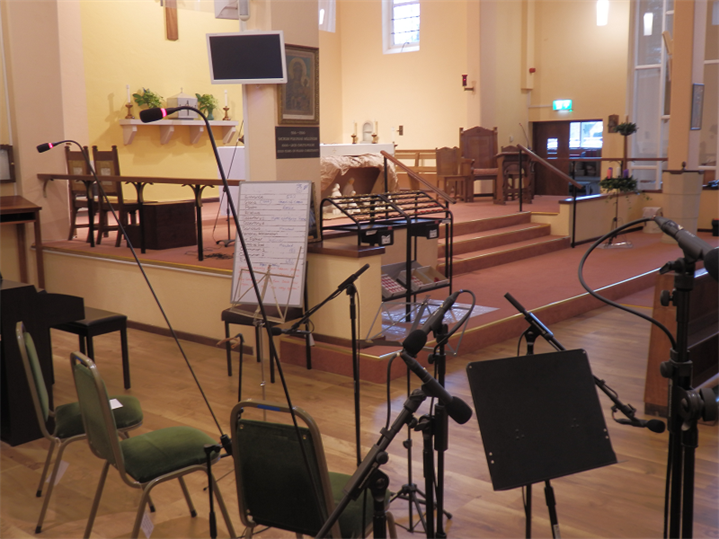Email us: info@hazelwoodsv.co.uk
Email us: info@hazelwoodsv.co.uk
As most of our work is fixed installations, we've learnt to listen (to you and your building) before we propose a way forward. Every church sound system is bespoke in different ways, because each building or room is acoustically and architecturally different. Therefore it's important that we fully understand what you want to achieve now, and into the foreseeable future.

The challenge with Live Sound is getting enough amplification to provide clarity and naturalness whilst preventing feedback (the whistling/howlround sound that happens when a microphone is turned up too loud). Overcoming reverberation and room resonances that muddy the voice (especially) is another issue.
Microphones for live sound, be they cabled or wireless, have to be directional enough to pick up what is required (and not the whole room) in order to get the maximum gain before feedback. This means we select the most appropriate microphones from the huge range on the market based on our experience in many differences venues.
The electronics that amplifiy the microphone signals should have tone controls and filters that can remove unwanted low frequencies (on voices) and isolate spot frequencies that reduce feedback. Automatic level control is very helpful to keep a consistent output from quieter as well as louder voices without operator intervention. Digital Signal Processing (DSP) is a great help with these requirements, and many more, that require a lot of individual pieces of (bulkier) analogue equipment to offer the same degree of control.
Loudspeakers need to direct the sound to where it is required in the listening area, and not up into the roof where it then bounces back and reduces intelligibility by increasing the reverberation. Typically this means some sort of column loudspeaker design - these have a controlled vertical dispersion (unlike single driver box units) depending on the directivity and power level required. In general the speakers should be high up out of sight lines or just above head height in a discrete location, rather than distributed (box type) speakers. And of course they should blend into their surroundings as well!
You may have an immediate need for clear speech reproduction, but what about the next 5 to 10 years? Will the system be required to support live music as well? And what about recording your services or events for later relay elsewhere (or even streaming to the internet)?
We can advise you on all these dilemmas and recommend the most cost effective church sound system to solve them as a single installation, or phased as your needs develop and your funds permit.